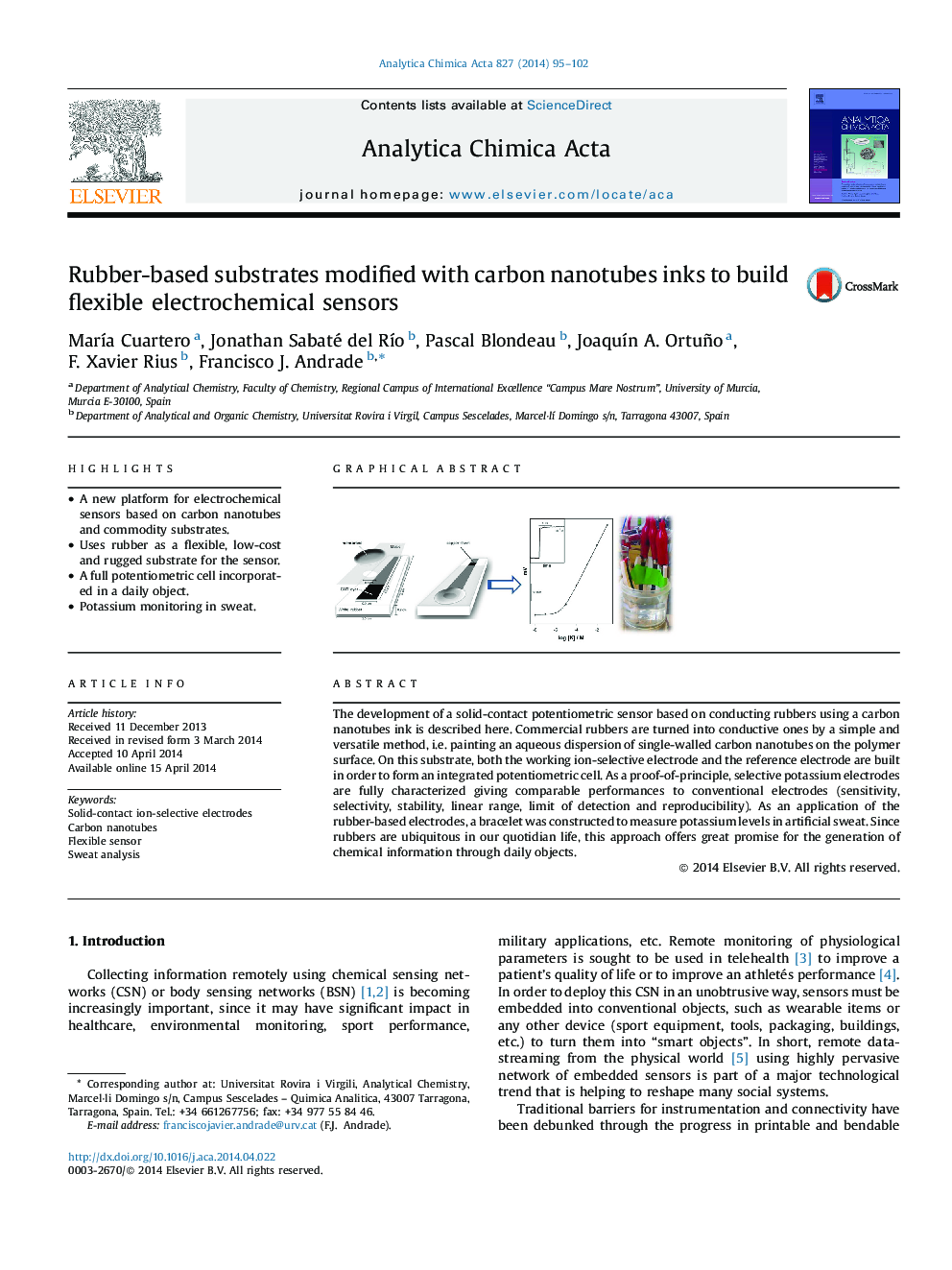| Article ID | Journal | Published Year | Pages | File Type |
|---|---|---|---|---|
| 1164063 | Analytica Chimica Acta | 2014 | 8 Pages |
•A new platform for electrochemical sensors based on carbon nanotubes and commodity substrates.•Uses rubber as a flexible, low-cost and rugged substrate for the sensor.•A full potentiometric cell incorporated in a daily object.•Potassium monitoring in sweat.
The development of a solid-contact potentiometric sensor based on conducting rubbers using a carbon nanotubes ink is described here. Commercial rubbers are turned into conductive ones by a simple and versatile method, i.e. painting an aqueous dispersion of single-walled carbon nanotubes on the polymer surface. On this substrate, both the working ion-selective electrode and the reference electrode are built in order to form an integrated potentiometric cell. As a proof-of-principle, selective potassium electrodes are fully characterized giving comparable performances to conventional electrodes (sensitivity, selectivity, stability, linear range, limit of detection and reproducibility). As an application of the rubber-based electrodes, a bracelet was constructed to measure potassium levels in artificial sweat. Since rubbers are ubiquitous in our quotidian life, this approach offers great promise for the generation of chemical information through daily objects.
Graphical abstractFigure optionsDownload full-size imageDownload as PowerPoint slide
